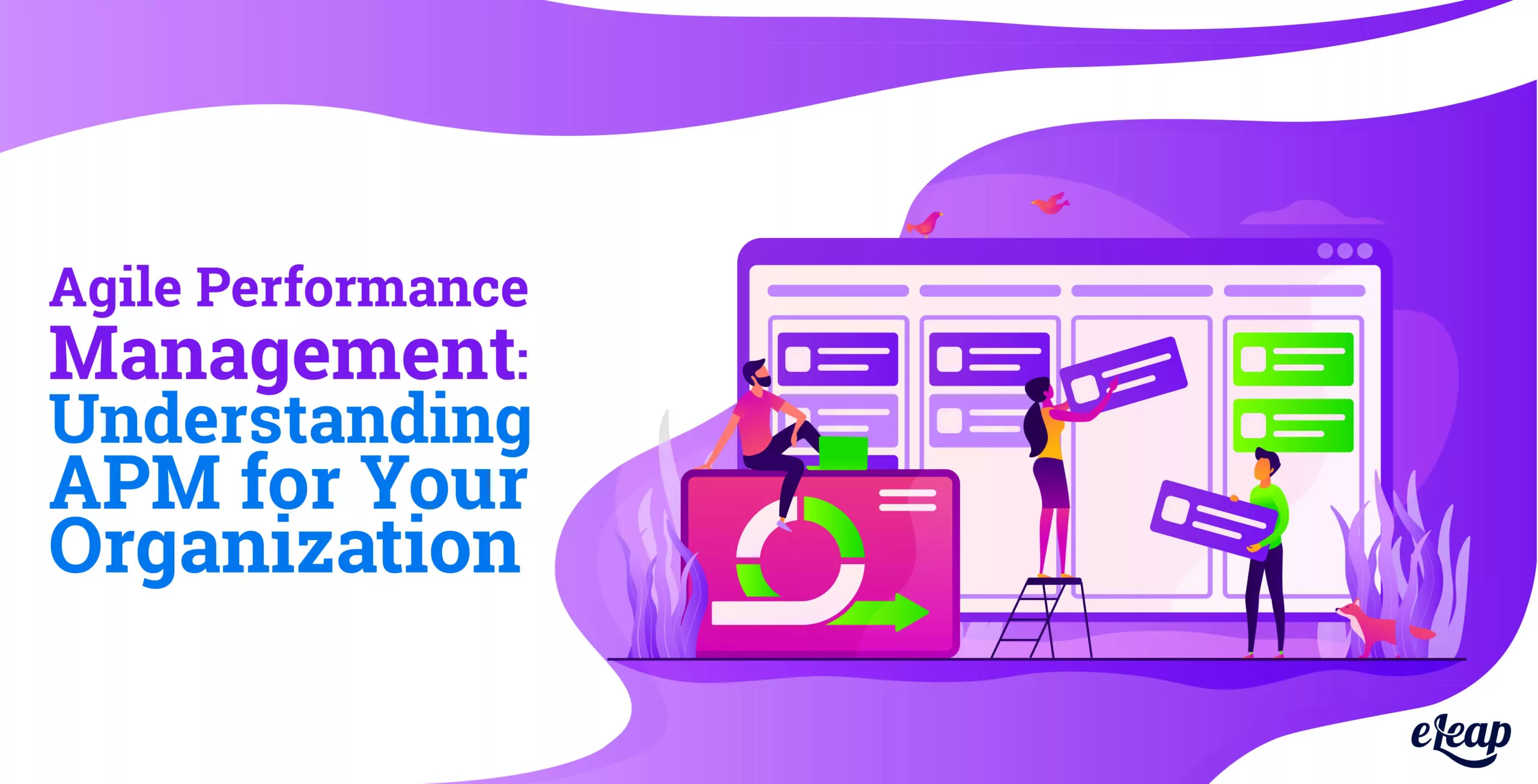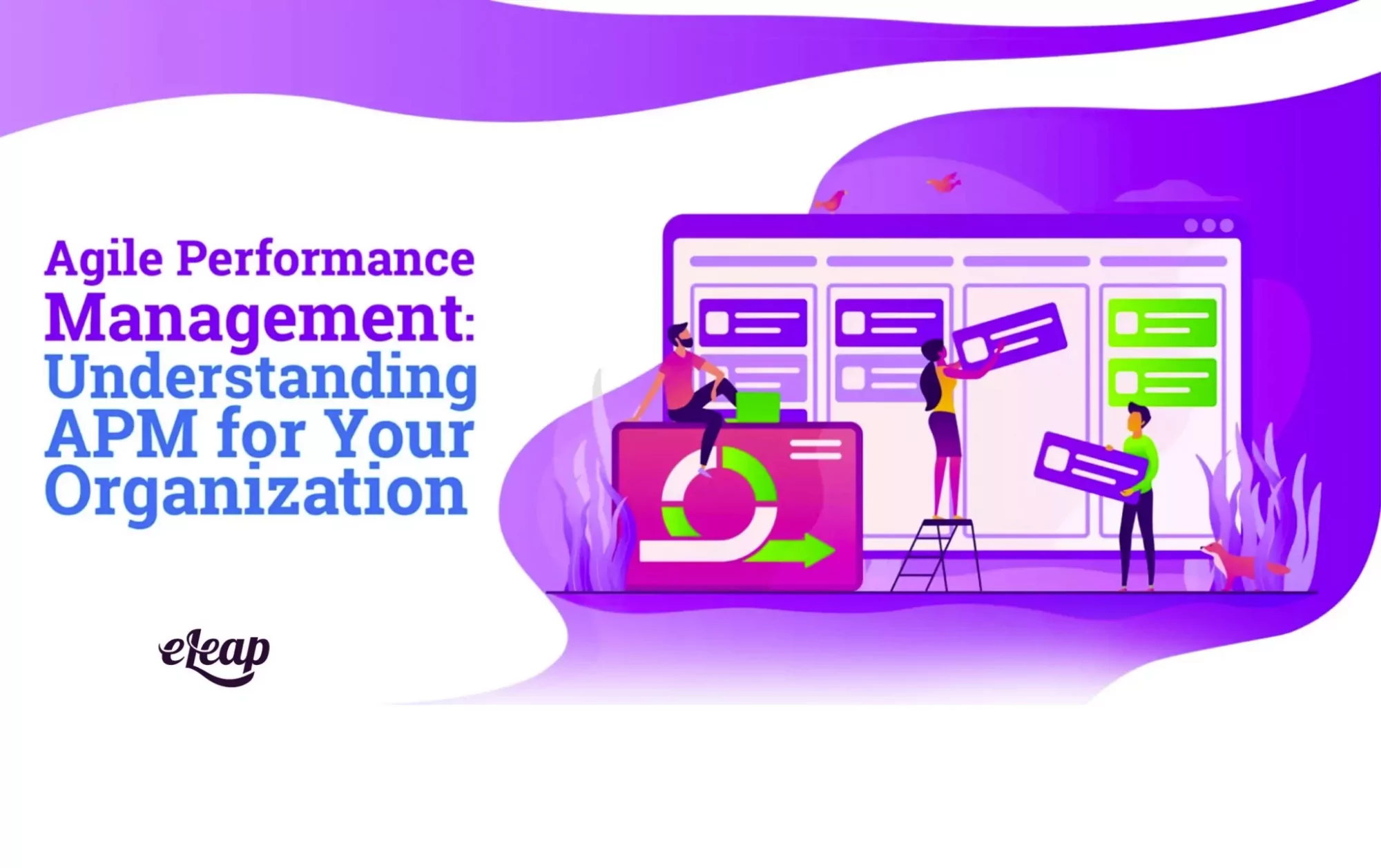Agile Performance Management: Understanding APM for Your Organization

Performance management has been around for a long time. During that period, it evolved a great deal. Many long-time concepts have fallen by the wayside, such as the value of the annual employee review. One change that has caught many unaware is the rise of agile performance management or APM for organizations. It differs significantly from other forms of Performance Management and can offer a great deal to your organization. However, to determine if this is the right approach, you’ll need to know more about its pros and cons and its capabilities. Explore how eLeaP®’s Performance Management Platform can simplify evaluations, boost productivity, and drive measurable results.

What Is Agile Performance Management?
While agile performance management might sound similar to conventional PM, those similarities are only superficial. It is a very different system, although the ultimate purpose – improvement of performance within an organization’s teams and employees – is the same.
Agile performance management is a collaborative, ongoing practice focusing on feedback and development. With conventional performance management, leaders tend to focus on employee shortcomings and failures, taints everything with negative connotations. An agile approach changes the paradigm by focusing on weaknesses and achievements to create a more holistic picture of employee performance.
Within agile performance management, three key aspects play central roles. These are:
The point is to bridge the gap between goal setting and performance evaluations.
The Features of Agile Performance Management
To understand the benefits of agile performance management, you need to know more about the various features here. They are broken down into four distinct sections.
Ongoing Conversations Surrounding Performance
With conventional performance management, there is only a discussion about employee performance once or twice yearly. That’s far too little for anyone to make actionable changes. With agile performance management, the debate occurs regularly. Not only that, but the format of the situation has changed. Rather than being a one-way flow of information from a superior to a subordinate, it becomes more of an equal conversation with natural give and takes from both sides.
The result is that it becomes more uncomplicated to stop unwanted behaviors quickly and more straightforward to set goals for improvement and monitor those changes. There is also the fact that employees are encouraged to provide feedback to managers, ensuring that their thoughts, experiences, and frustrations are known and that managers have the opportunity to improve. It comes down to two-way information sharing.
Peer-Based Feedback
Traditionally, organizations were structured rigidly, and information tended to flow in one direction only – downward. With agile performance management, the work environment becomes more collaborative. The focus is on creating something more level than the traditional hierarchical structure, and this is reflected in peer-based feedback being worked into reviews and ongoing performance-related conversations.
This method allows those around an employee or on the same team as the employee to provide feedback (both to the employee being reviewed and to management). A peer-based feedback system can be an invaluable solution offering significant benefits beyond what is possible with a manager-employee review. Often, employees value the opinions and feedback of peers more than they do those of leaders. Peers are also frequently better able to suggest improvement in different terms that help employees grasp the importance of the changes as applied to their daily responsibilities.
Less Reliving the Past
With conventional performance management, the focus is almost entirely on the past. This is natural, as the conversation surrounds failures in the past. However, it must be understood that a backward-facing stance ultimately drags the entire company down. Not only that, but employees often find it challenging to apply lessons from past experiences to new ones, mainly if those two experiences are very dissimilar.
With agile performance management, there is a focus on today and tomorrow rather than yesterday. This is partly due to the increasing emphasis on regular conversations surrounding improvements. Rather than taking a look back once or twice a year, weekly check-ins allow the conversation to turn toward how lessons can be incorporated into situations the employee is facing today and might face tomorrow.
Coaching Is the Norm
Traditionally, coaching is seen as a negative thing. That is partly because coaching is not the norm. With agile performance management, coaching becomes routine rather than an exception. Also, new ways of coaching give it a less negative connotation. For instance, eLearning levels the playing field, making coaching accessible to all, plus providing the means to up-skill the entire workforce.
The Benefits of Agile Performance Management
We’ve touched on many of the benefits offered by APM in the sections above, but they deserve more scrutiny.
- APM makes coaching simpler, easier, and more effective.
- Employees can give their feedback and feel both heard and valued.
- APM dovetails with eLearning, helping move your organization into the 21st
- APM is present and future-focused rather than focusing solely on the past.
- APM turns performance evaluations into conversations.
- Recognition is given to employee achievements, not just to failures.
- It becomes possible to create a more positive corporate culture.
- Changes take dramatically less time and are easier to make.
- It makes setting measurable, actionable goals simpler.
- It ensures that you’re easily able to measure progress toward targeted changes.
In Conclusion
Ultimately, agile performance management should be seen not as a different method but as the next step in PM’s evolution. Just as organizations have evolved and the world has become more competitive, so has the need to give actionable, direct, compassionate coaching increased. Agile performance management works within any organizational culture to foster necessary changes, improve your ability to compete and help ensure your employees have the support and means to improve themselves and their environment.